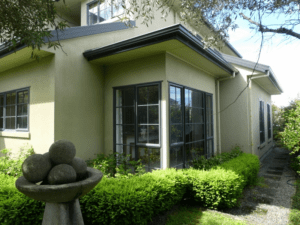
Image Source: FreeImages
## Introduction
As a landlord or property manager, it is important to understand the distinction between repairs and improvements when it comes to maintaining your rental properties. One common question that arises in this context is whether painting a rental house is considered a repair or an improvement. The answer to this question can have significant implications for both landlords and tenants. In this article, I will delve into the definitions, legal considerations, and various factors that influence the classification of painting as a repair or an improvement. By gaining clarity on this matter, you can navigate the responsibilities and expectations associated with maintaining your rental properties more effectively.
Definitions
Before we delve deeper into the topic, it is essential to establish clear definitions for the terms “repair” and “improvement” in the context of rental properties. A repair refers to the act of fixing or restoring something that is damaged, broken, or in need of maintenance. It is typically carried out to restore the property to its original condition or to address wear and tear resulting from normal usage. On the other hand, an improvement involves making changes or additions that enhance the property’s value, functionality, or aesthetic appeal beyond its original state. It goes beyond basic maintenance and aims to upgrade or modernize the property.
Legal Considerations
The classification of painting as a repair or an improvement can have legal implications for both landlords and tenants. Different jurisdictions may have varying regulations and laws that govern this matter. It is crucial to consult local housing laws or seek legal advice to ensure compliance with the specific regulations in your area. By understanding the legal considerations, you can make informed decisions and avoid potential legal disputes or liabilities.
Repair vs. Improvement
Now let’s address the question at hand: Is painting a rental house considered a repair or an improvement? The answer depends on various factors, including the purpose, scope, and extent of the painting project. If the painting is done solely to restore or maintain the property’s existing condition, such as fixing peeling paint or covering up minor damages, it is generally classified as a repair. However, if the painting involves significant changes, such as updating the color scheme or adding decorative elements, it may be considered an improvement.
Factors Influencing Classification
Several factors can influence the classification of painting as a repair or an improvement. Firstly, the intent behind the painting project plays a crucial role. If the purpose is to address normal wear and tear or to rectify damages caused by the tenant, it is more likely to be categorized as a repair. On the other hand, if the primary aim is to upgrade the property’s appearance or to attract new tenants, it may be seen as an improvement. Additionally, the extent and cost of the painting project can also impact the classification. A minor touch-up or repainting a single room is more likely to be considered a repair, while a complete overhaul of the property’s paintwork may be regarded as an improvement.
Maintenance Painting
Maintenance painting is a term commonly used to describe the regular painting required to keep a rental property in good condition. It typically involves repainting surfaces that have deteriorated due to normal wear and tear. Maintenance painting is generally considered a repair as it aims to restore the property to its original state and prevent further damage or decay. By staying proactive with maintenance painting, landlords can ensure that their rental properties remain attractive and well-maintained, minimizing potential conflicts with tenants and maximizing their property’s value.
Cost Considerations
Cost is another crucial aspect to consider when determining whether painting a rental house is a repair or an improvement. Generally, if the cost of the painting project is relatively low and falls within the realm of routine maintenance, it is more likely to be classified as a repair. However, if the painting project involves a substantial investment, such as hiring professional painters or using high-quality materials, it may lean more towards being considered an improvement. Evaluating the cost of the project in relation to the property’s overall value and the extent of the changes made can provide valuable insights into its classification.
Tenant Expectations
Understanding tenant expectations is vital when deciding whether painting a rental house is a repair or an improvement. Tenants typically expect the property to be well-maintained and visually appealing. While they may not have specific preferences regarding the color scheme or decorative elements, they do value a fresh and clean appearance. By addressing their expectations, landlords can enhance tenant satisfaction and attract quality tenants. Regularly maintaining the paintwork and ensuring a pleasing aesthetic can contribute to positive tenant experiences and longer tenancy durations.
Landlord’s Responsibilities
The classification of painting as a repair or an improvement also affects the responsibilities of landlords. As a landlord, you have a legal obligation to provide habitable living conditions for your tenants. This includes maintaining the property’s structural integrity and addressing necessary repairs. However, improvements that enhance the property’s value or aesthetics may not be considered obligatory unless explicitly specified in the lease agreement or local housing laws. Understanding your responsibilities as a landlord is crucial to avoid potential conflicts with tenants and ensure compliance with legal obligations.
Documentation and Record-Keeping
Maintaining proper documentation and records is essential when it comes to painting a rental house. Keeping a record of the painting projects, including dates, costs, and details of the work done, can help establish whether the painting is classified as a repair or an improvement. It is advisable to maintain a comprehensive record-keeping system to demonstrate compliance with legal requirements and to provide evidence in case of disputes or inquiries. By documenting the painting projects, landlords can effectively manage their rental properties and ensure transparency in their maintenance practices.
Case Studies or Examples
To further illustrate the classification of painting as a repair or an improvement, let’s consider a few case studies. In Case Study 1, a rental property requires minimal touch-ups to address minor damages and wear and tear. The painting project is relatively inexpensive and aims to restore the property’s original condition. In this case, painting would be considered a repair. In Case Study 2, a landlord decides to completely repaint the rental property with a modern color scheme to attract new tenants and increase its market value. This painting project involves a significant investment and falls into the improvement category.
Conclusion
In conclusion, the classification of painting a rental house as a repair or an improvement depends on various factors, including the purpose, scope, and extent of the painting project. Understanding the definitions, legal considerations, and factors influencing the classification is essential for landlords and property managers. By differentiating between repairs and improvements, landlords can effectively manage their responsibilities, meet tenant expectations, and maintain their properties in a manner that enhances value and tenant satisfaction. By keeping documentation and records, landlords can ensure compliance with legal requirements and demonstrate transparency in their maintenance practices. Ultimately, striking the right balance between repairs and improvements contributes to a harmonious landlord-tenant relationship and the long-term success of rental properties.
CTA: If you found this article helpful, be sure to check out our comprehensive guide on rental property maintenance for more tips and insights on managing your rental properties effectively.


